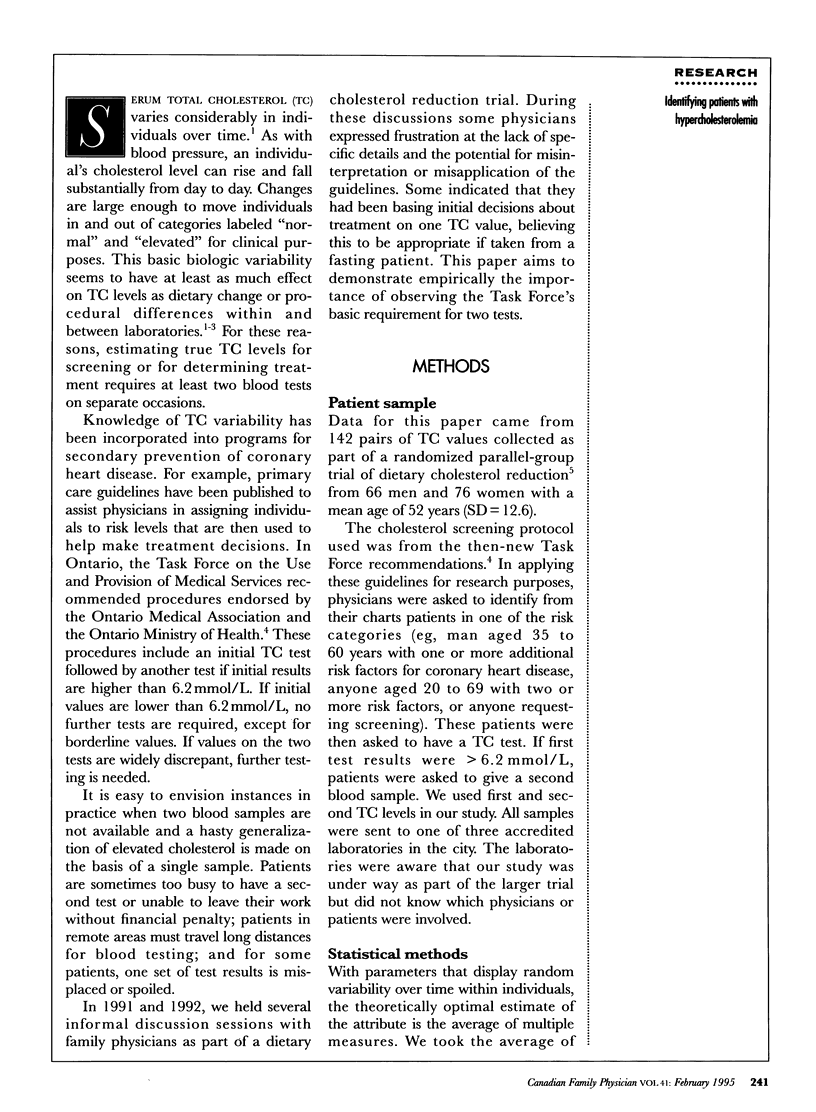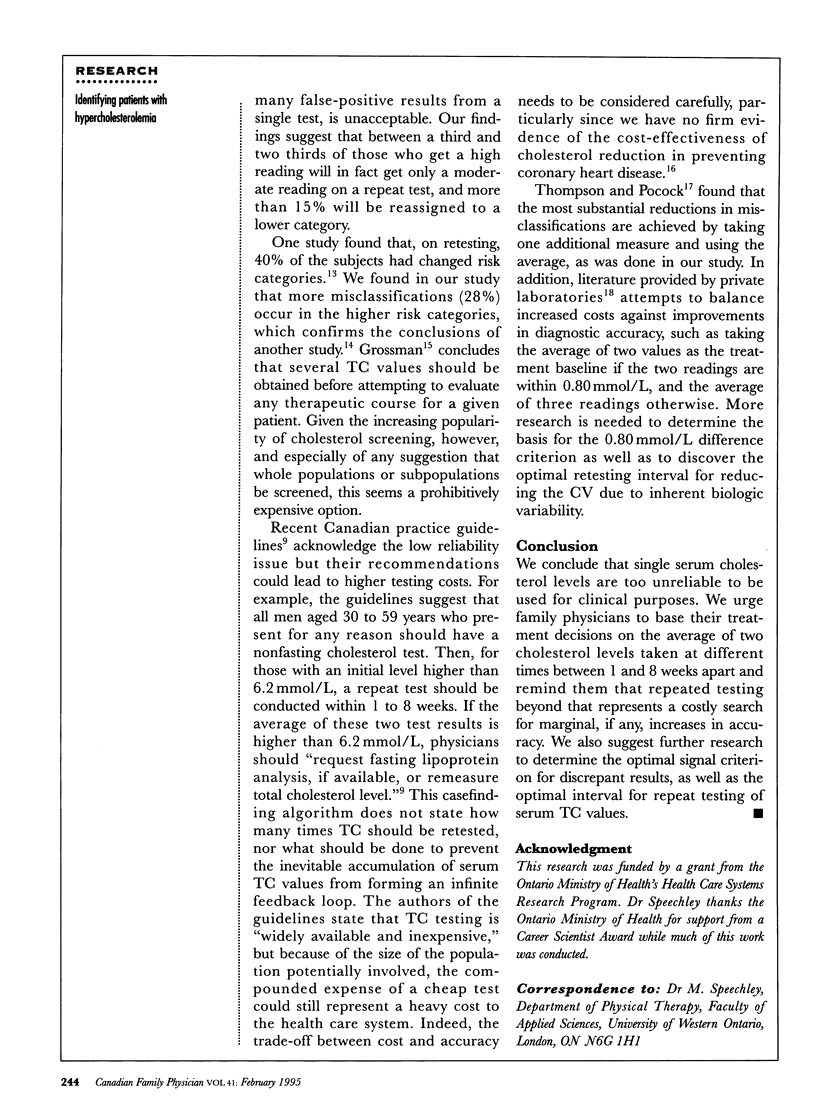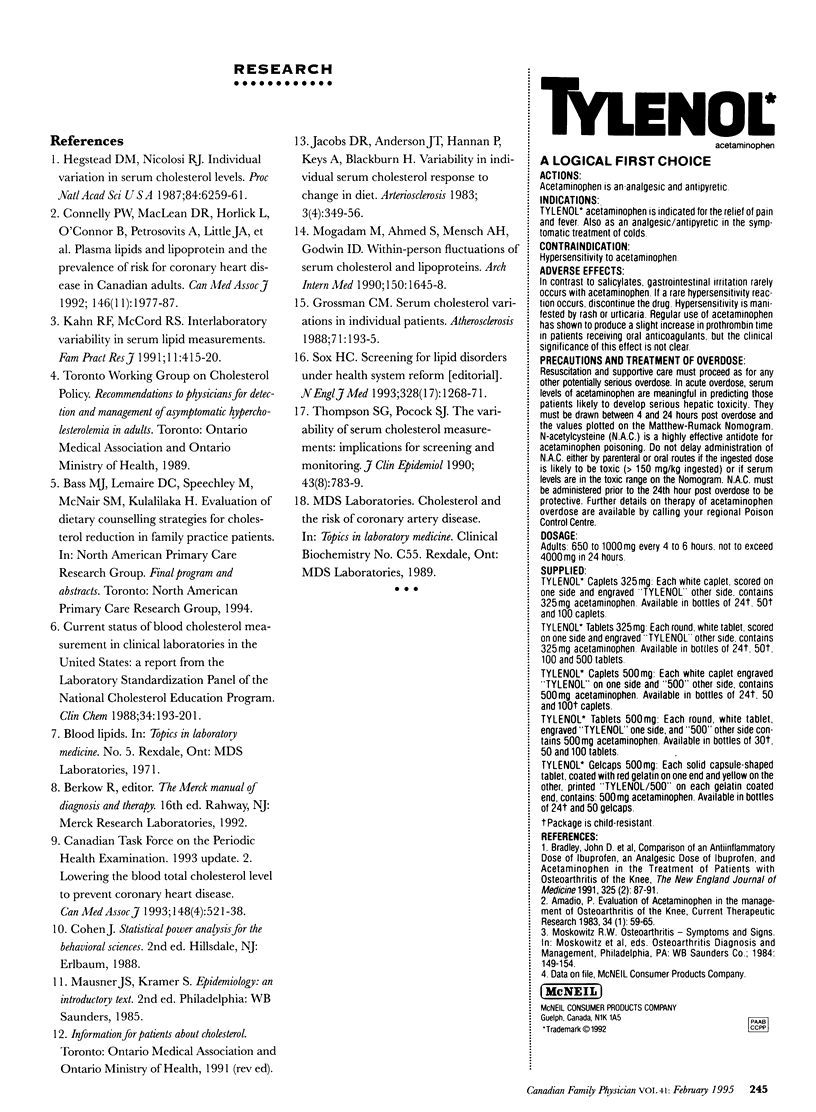Abstract
OBJECTIVE: To compare the use of one and two blood samples for diagnosing hypercholesterolemia DESIGN: A test-retest substudy conducted as part of a randomized control trial designed to compare the effectiveness of different counseling strategies for lowering serum cholesterol, dietary fat, and dietary cholesterol in patients with moderate hypercholesterolemia. SETTING: Thirty urban family practices. PARTICIPANTS: One hundred forty-two patients provided two blood samples for total cholesterol (TC) level determination at two different times (test results were being used as an eligibility criterion for enrollment in the main trial). MAIN OUTCOME MEASURES: Number of subjects correctly classified to cholesterol risk category (normal < 6.2 mmol/L; moderate 6.2 to 6.9 mmol/L; high > 6.9 mmol/L) on the basis of one TC value and on the average of two TC values. RESULTS: Overall misclassification rate on initial TC level was 22.5%. Overall false-positive rate was 19.0%, but false-positive rate for those initially assigned to the high category was 50%. Overall false-negative rate was 3.5%. Misclassification rates did not differ statistically on the basis of age, sex, blood pressure, smoking status, family history of coronary heart disease, presence of diabetes, obesity, the laboratory used, or whether the patient had fasted before giving blood. CONCLUSIONS: Single TC levels are too unreliable for diagnostic purposes, even if the subjects fast before testing. Family physicians should base their treatment decisions on the average of two cholesterol readings taken at different times 1 to 8 weeks apart.
Full text
PDF





Selected References
These references are in PubMed. This may not be the complete list of references from this article.
- Connelly P. W., MacLean D. R., Horlick L., O'Connor B., Petrasovits A., Little J. A. Plasma lipids and lipoproteins and the prevalence of risk for coronary heart disease in Canadian adults. Canadian Heart Health Surveys Research Group. CMAJ. 1992 Jun 1;146(11):1977–1987. [PMC free article] [PubMed] [Google Scholar]
- Grossman C. M. Serum cholesterol variations in individual patients. Atherosclerosis. 1988 Jun;71(2-3):193–195. doi: 10.1016/0021-9150(88)90143-8. [DOI] [PubMed] [Google Scholar]
- Hegsted D. M., Nicolosi R. J. Individual variation in serum cholesterol levels. Proc Natl Acad Sci U S A. 1987 Sep;84(17):6259–6261. doi: 10.1073/pnas.84.17.6259. [DOI] [PMC free article] [PubMed] [Google Scholar]
- Jacobs D. R., Jr, Anderson J. T., Hannan P., Keys A., Blackburn H. Variability in individual serum cholesterol response to change in diet. Arteriosclerosis. 1983 Jul-Aug;3(4):349–356. doi: 10.1161/01.atv.3.4.349. [DOI] [PubMed] [Google Scholar]
- Kahn R. F., McCord R. S. Interlaboratory variability in serum lipid measurements. Fam Pract Res J. 1991 Dec;11(4):415–420. [PubMed] [Google Scholar]
- Mogadam M., Ahmed S. W., Mensch A. H., Godwin I. D. Within-person fluctuations of serum cholesterol and lipoproteins. Arch Intern Med. 1990 Aug;150(8):1645–1648. [PubMed] [Google Scholar]
- Thompson S. G., Pocock S. J. The variability of serum cholesterol measurements: implications for screening and monitoring. J Clin Epidemiol. 1990;43(8):783–789. doi: 10.1016/0895-4356(90)90238-k. [DOI] [PubMed] [Google Scholar]


